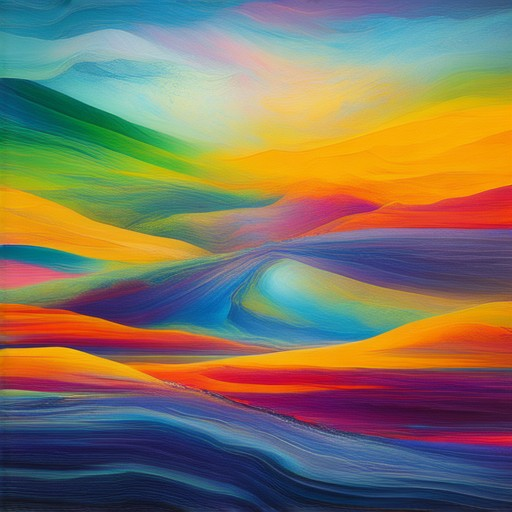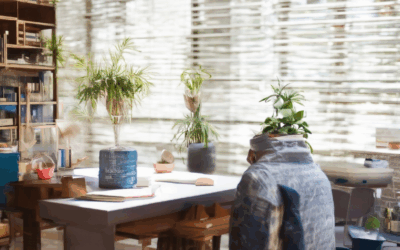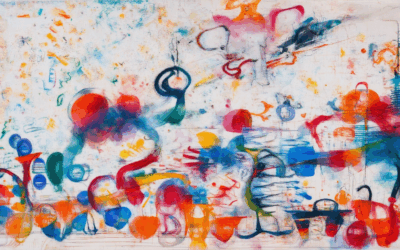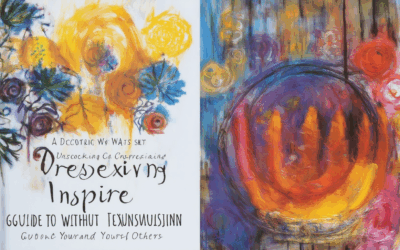The exploration of an art journey is a profound experience that often requires introspection and self-reflection. For many artists and enthusiasts, the process of creating and evolving in their craft is akin to a journey—a path filled with discoveries, challenges, and growth. Reflecting on this journey allows individuals to gain deeper insights into their creative processes, identify areas for improvement, and connect with the broader community of art lovers. This article delves into the intricate dynamics of reflections on art journeys, examining the five core elements that define this unique experience. By understanding these elements, artists can unlock new dimensions of their craft and find inspiration in the stories of others who have walked similar paths. Whether you’re an aspiring artist or a seasoned creator, the insights offered here will guide you in crafting meaningful reflections and fostering a richer connection with your work.
Key Takeaways
- Curiosity Drives Art Reflection: Approach every artwork with curiosity to uncover hidden meanings and inspirations.
- Connection Fuels Creativity: Link personal insights to broader themes, enriching your artistic expression.
- Critique Sharpens Technique: Evaluate technical aspects and style to refine your craftsmanship.
- Context Deepens Appreciation: Understand the cultural and historical background to grasp the artwork’s significance.
- Reflection Guides Growth: Use reflection to inform future projects, fostering continuous artistic evolution.
- Ask Thoughtful Questions: Engage with prompts that provoke deeper thinking and self-discovery.
- Enhance Self-Awareness: Utilize reflection statements to explore emotions and evolve personally and artistically.
- Inspire Future Creations: Let reflection inspire new ideas and push your artistic boundaries.

Reflection About Art
Art is a complex and multifaceted concept that has been a part of human culture for thousands of years. Reflecting on art involves exploring its purpose, its impact, and its significance in various contexts. Here’s a deeper dive into the reflection about art:
The Role of Art in Society
Art serves numerous functions in society, including the expression of emotions, the transmission of cultural values, and the exploration of ideas. It can inspire individuals, challenge norms, and provide a medium for storytelling. Reflection about art allows us to analyze these functions and understand how they contribute to our lives.
Art as a Therapeutic Medium
One of the most profound reflections about art is its therapeutic effect. Art can help individuals process emotions, cope with stress, and find meaning in life. Whether it’s through painting, music, or sculpture, art offers a unique way to externalize internal feelings and gain perspective.
Artistic Movements and Their Messages
Reflecting on art also involves studying major artistic movements and their underlying messages. For example, the Renaissance focused on realism and the idealization of the human body, while the Impressionists emphasized light and movement. These movements reflect the cultural and intellectual shifts of their time, offering insights into historical contexts.
Personal Interpretation and Creativity
Art is deeply personal, and reflecting on it allows individuals to explore their own interpretations and creative processes. This reflection can lead to breakthroughs in thinking, as people often discover new ways to express themselves through art.
Art as a Global Language
Despite its diverse forms, art transcends language barriers and cultural differences. Reflecting on art helps bridge gaps between people, fostering empathy and understanding. It reminds us that, regardless of background, we share common experiences and emotions that can be expressed and shared through art.
Challenges in Understanding Art
However, reflecting on art is not always easy. Some works are open to interpretation, leading to debates about meaning and intention. This ambiguity can be both frustrating and enriching, as it encourages critical thinking and dialogue.
Conclusion
Ultimately, reflecting on art is a journey of discovery. It invites us to explore our inner worlds, connect with others, and grow intellectually. By engaging with art thoughtfully, we can unlock new dimensions of ourselves and the world around us.
For more insights into creativity and artistic reflection, visit Patrick Mettraux , a platform dedicated to inspiring creativity and fostering imagination.
Understanding the Concept of Journey in Art
A journey in art refers to the exploration of themes, experiences, and emotions through movement, space, and composition. It can be interpreted literally, as a physical or metaphorical passage, often symbolizing growth, discovery, or transformation. Here’s a breakdown of its key aspects:
- Physical Journeys :
Physical journeys in art depict travels between places, often reflecting cultural or historical contexts. Artists may use this theme to explore landscapes, cities, or environments, capturing the essence of exploration and displacement. For example, paintings by Claude Monet often show journeys through nature, while works by Caspar David Friedrich evoke solitary voyages through rugged terrain. - Metaphorical Journeys :
Beyond physical movement, a journey can represent internal states. This could be emotional, psychological, or spiritual. Artists like Vincent van Gogh used self-portraits to illustrate their personal struggles, showing a journey through chaos to find peace. Similarly, Mark Rothko’s abstract works explore the journey from confusion to enlightenment. - Exploration and Discovery :
A journey in art encourages curiosity and experimentation. It often involves pushing boundaries, whether in medium, technique, or subject matter. This mindset aligns with the artistic process itself, where creators navigate unknown territories to find unique expressions. - Cultural and Historical Contexts :
Journeys in art are deeply tied to history. From ancient cave paintings depicting migrations to modern-day installations addressing global issues, art has always reflected humanity’s quest for survival and progress. Artists like Jacob Lawrence used series to document journeys, offering visual narratives of migration and resilience. - Actionable Insights for Artists :
Embrace the journey as a metaphor for your creative process. Allow yourself to wander, experiment, and evolve. Consider how your work mirrors real-life journeys—whether literal or symbolic—and how it resonates with viewers on a deeper level.
By understanding the multifaceted nature of journeys in art, creators can craft pieces that inspire reflection and connection, ultimately enriching the broader cultural tapestry.

The 5 Cs of Art
The 5 Cs of art are a fundamental framework for understanding and appreciating the role of art in design and culture. These principles provide a comprehensive approach to creating meaningful and impactful art. Below, I’ll break down each of the 5 Cs in detail:
- Collection :
A strong art collection is the foundation of any artist’s journey. It involves gathering and curating a diverse range of artistic works that inspire and challenge your creativity. Over time, your collection will reflect your unique style and evolution as an artist. I’ve written extensively about building a personal art collection in this guide: Exploring the Power of Personal Art Collections . - Community :
Art thrives in community. Engaging with fellow artists, joining online forums, and participating in local exhibitions can open up new opportunities and ideas. Collaborations with other creatives can lead to exciting projects and push your boundaries. Discover how communities can fuel your artistic growth in this article: The Role of Art Communities in Creative Development . - Culture :
Understanding and embracing the cultural context of your work is crucial. Art is deeply tied to history, traditions, and societal values. By immersing yourself in different cultures, you can bring fresh perspectives to your creations. Explore cultural influences on art in my piece: Cultural Influences on Modern Art . - Collaboration :
Collaboration is a powerful tool in the art world. Working with others can lead to innovative outcomes and expand your reach. From joint exhibitions to collaborative projects, teamwork can result in groundbreaking art. Learn more about the benefits of collaboration in this guide: The Importance of Collaboration in Art . - Creativity :
At its core, art is about creativity. Cultivating your imagination and experimenting with new techniques can lead to extraordinary works. Nurturing your creative process and staying curious will help you produce art that resonates deeply with others. Discover tips for fostering creativity in my article: Fostering Creativity in Artistic Practice .
By focusing on these 5 Cs—Collection, Community, Culture, Collaboration, and Creativity—you can create art that is not only personal but also impactful and meaningful. Each element plays a vital role in shaping your artistic journey, and mastering them can take your work to new heights.

How to Write an Art Reflection
To write an effective art reflection, follow these organized steps:
- Start with Personal Insight: Begin by sharing your immediate feelings or reactions to the artwork. Consider questions like, “What emotions did it evoke?” or “What memories does it trigger?” This sets a personal foundation for your reflection.
- Explore Central Themes: Identify the primary themes or messages in the artwork. Are there recurring symbols, colors, or subjects? Reflect on how these elements contribute to its overall meaning and impact.
- Analyze Technical Aspects: Examine the medium, techniques, and style used. Consider how the artist’s choices affect the mood, texture, and composition. For instance, discuss how light and shadow in a painting might convey depth or dimensionality.
- Consider Cultural Context: Research the historical or societal background of the artwork. Understanding its cultural roots can deepen your appreciation and analysis. Ask yourself how it fits into broader artistic movements or styles.
- Connect to Your Own Work: Use this reflection to gain insights into your own artistic process. How does this artwork inspire or influence your approach? What techniques or themes can you integrate into your future work?
By systematically addressing each aspect, your reflection becomes more thoughtful and meaningful. Explore more tips and examples on artistic reflection techniques and expressive art analysis to enrich your practice.
Reflection Statements
A reflection statement is a self-reflective sentence or phrase used to express introspection, realization, or insight. These statements are often used in writing, speaking, or personal journaling to explore one’s thoughts, emotions, or experiences.
Types of Reflection Statements
- Realization: Expressing understanding of a situation or concept.
- Doubt: Acknowledging uncertainty or confusion.
- Uncertainty: Reflecting on unknown outcomes or possibilities.
- Gratitude: Expressing appreciation or thankfulness.
- Mistake Acknowledgment: Admitting errors or shortcomings.
Examples of Reflection Statements
- “I realize now that I approached the problem incorrectly.” – Patrick Mettraux
- “I am unsure about the decision, but I believe it’s the right path.”
- “This experience has taught me the importance of adaptability.”
- “I regret not listening to my instincts earlier.”
- “I am grateful for the opportunity to grow from this challenge.”
Conclusion
Reflection statements are powerful tools for self-awareness and personal development. By regularly reflecting on your experiences, you can gain deeper insights into yourself and your surroundings.

Good Reflection Questions for Art
Reflection is a crucial part of the creative process, allowing artists to explore their work, identify strengths, and areas for growth. Here are some thought-provoking reflection questions tailored for artists:
- What inspired you to create this piece? Understanding the source of your inspiration can help you articulate your vision better.
- How does your artwork reflect your personality or beliefs? This question invites introspection about the deeper meaning behind your work.
- What techniques did you use to achieve the desired effect? Reflecting on your technical choices can enhance your craftsmanship.
- What challenges did you face during the creation process? Identifying obstacles helps in problem-solving and improves resilience.
- How does this piece connect to your body of work? Exploring continuity and evolution in your art can reveal your creative trajectory.
- What emotions or themes does your artwork convey? This question helps in understanding the emotional impact of your work.
- How do you see your art fitting into the broader context of art history? Contextualizing your work can provide historical perspective and inspiration.
- What feedback would you most appreciate from others? This question reveals what aspects of your work you value most and guides future improvements.
- How has your art evolved over time? Tracking changes in your style or subject matter can show growth and development.
- What role does experimentation play in your artistic process? Reflecting on experimentation can highlight your innovative approach.
- How do you balance creativity with technical skill? This question explores the intersection of artistry and craftsmanship.
- What goals do you hope to achieve with your next project? Setting objectives can guide your future creations and keep you motivated.
- How do you handle criticism or negative feedback? Understanding your response to critique can improve your resilience and adaptability.
- What advice would you give to aspiring artists? Sharing wisdom can help others while reinforcing your own journey.
- How does nature or the environment influence your work? This question highlights external influences on your creativity.
- What cultural or societal issues does your art address? Reflecting on social relevance can deepen the impact of your work.
- How do you manage stress or burnout as an artist? Self-care strategies can improve productivity and well-being.
- What opportunities do you see for collaboration in the future? Exploring teamwork can open new creative possibilities.
- How do you stay curious and continue learning as an artist? Fostering curiosity can lead to endless creative exploration.
- What legacy do you hope your work will leave behind? Thinking about long-term impact can inspire meaningful contributions.
By regularly reflecting on these questions, artists can gain valuable insights, refine their practice, and grow as creators. Remember, the goal is to foster a deeper understanding of your art and its significance.





0 Comments